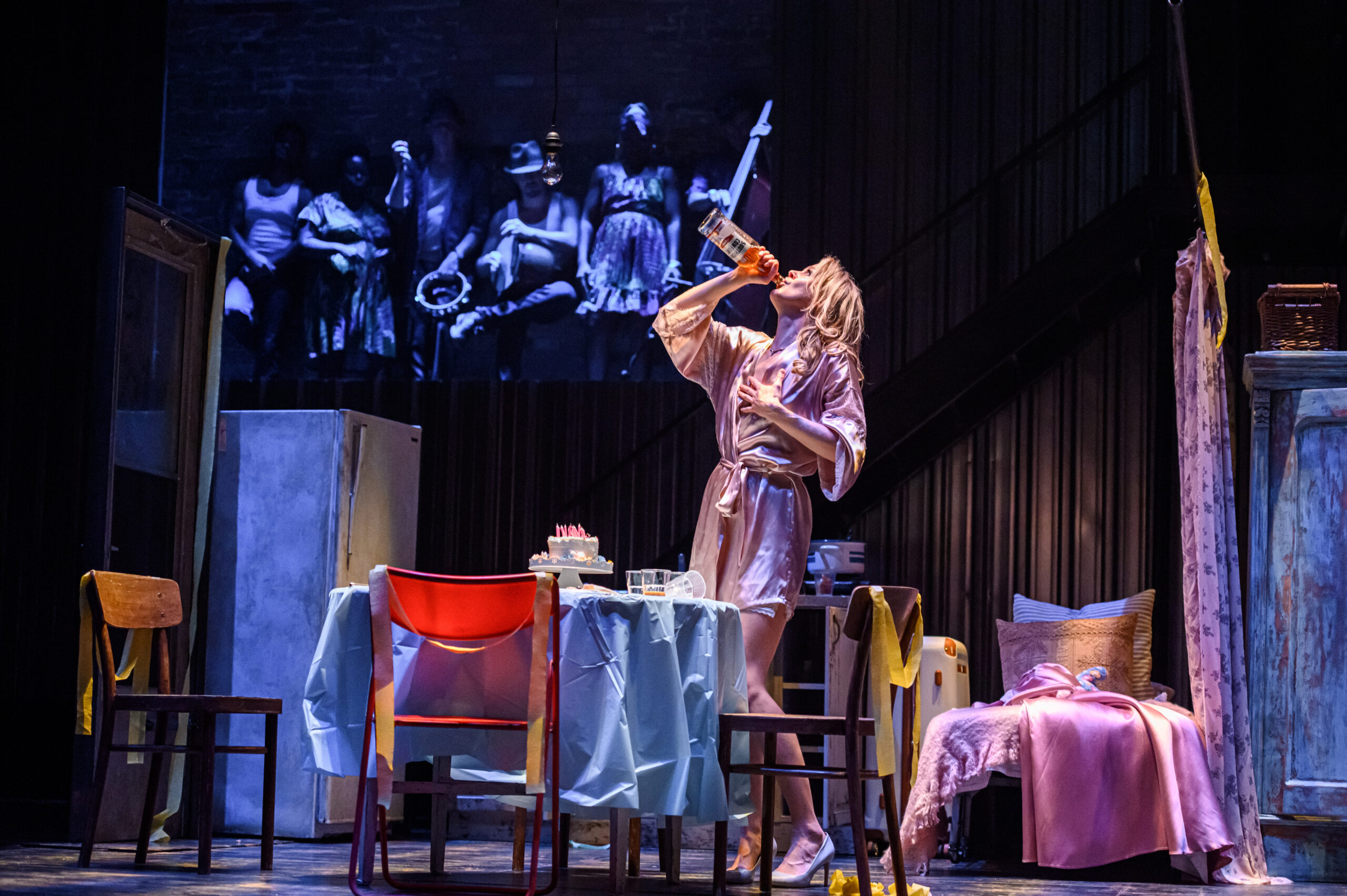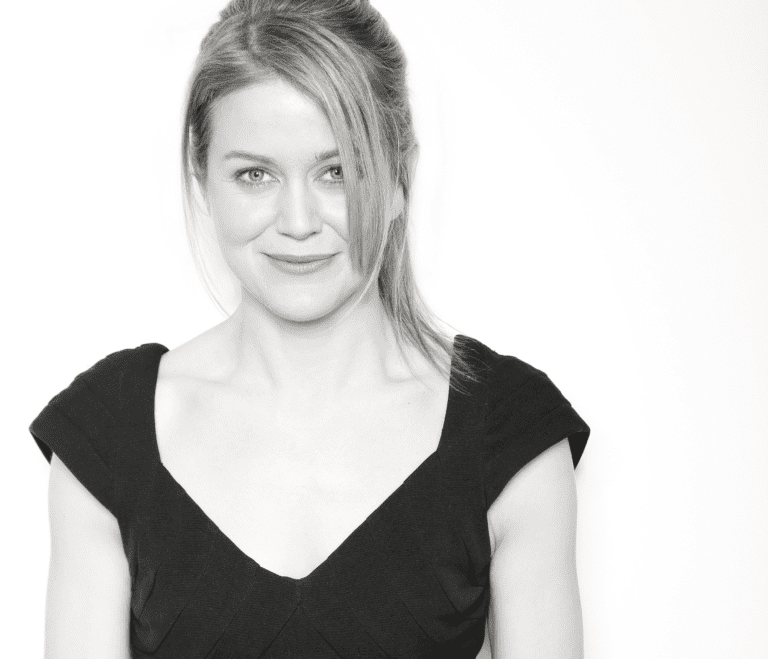Kindness From Strangers
I am a few days from starting rehearsals for A Streetcar Named Desire at Soulpepper. When I tell people that I will be playing the iconic character of Blanche DuBois I get a number of responses. “Stella!” followed by a beating of the chest is one. A strange pantomime of a southern belle is another—this usually involves a kind of prancing around on the spot and a batting of the eyelashes. Another is a sort of lascivious look, followed by a finger wag: “Oooh… that hussy!” And then there are some who just roll their eyes. “What a nutcase!”
I too have had my own preconceived notions of Blanche. A couple of weeks ago I was gardening, shoveling dirt and lugging flagstones, when I thought to myself: Careful… Blanche doesn’t have huge pipes… In my audition, I remember thinking: Oh no, I’d be the tallest Blanche in history! I caught myself wanting to somehow live up to the Blanche that I had in my mind, the Blanche of the 1940s: small, waif-like, and demure.
As I begin to unpack my preconceptions, I find myself wondering how progressive-minded audiences will read Blanche. As a woman who grew up on a plantation, one can only assume that the wealth of her family was gained through exploitation and slavery. Her husband shot himself shortly after she expressed her disgust for his homosexuality. She lost her teaching position after having an affair with one of her students, a seventeen-year-old boy. She’s an alcoholic. A flirt. She takes extravagant holidays in the hopes of finding a millionaire husband.

Amy Rutherford in rehearsals for A Streetcar Named Desire. Photo by Daniel Malavasi.
Will a contemporary audience sympathize with this flawed female character, one that doesn’t necessarily reflect the values of our time? Does it matter if they do? What is expected of female characters today?
When I compare Blanche to the iconic antihero Hamlet, I see a lot of similarities. They both come from privilege. Like Blanche, Hamlet’s bad behaviour is at times driven by fear. Like Blanche, he bends the truth for his own advantage. Both reveal the hypocrisy of the people around them. They are both eloquent, both unhinged. Both suicidal. Both dejected and depressed. Both push forward with eyes wide open and are largely responsible for their own downfall. And yet, these two antiheroes are written and spoken about in very different ways. Blanche is often regarded as a hapless victim or a deranged nymphomaniac, whereas Hamlet is often seen as a brilliant enigma fighting for truth.
Why the discrepancy? Is it because Blanche adorns herself in jewellery and furs? Is it because she hides her fear and self-doubt beneath a hyper-feminine mask? Is it because our culture still feels the need to categorize women into clear roles of the mother, the virgin, and the whore, and Blanche defies these facile categories at every turn?
There are critics who have pointed to the inherent misogyny in Tennessee Williams’ script, in an effort to explain Blanche’s sexual predation, deceit, and manipulation. Had a female playwright written Blanche, or had she been written during a different point in history, perhaps her characterization would be more forgiving. But then, Blanche would not be Blanche—a character emblematic of a dwindling American aristocratic class, full of eloquence and Southern charm, and shaped from the very fabric of William’s being. To quote Williams: “I draw every character out of my very multiple split personality. My heroines always express the climate of my interior world at the time in which those characters were created.” The character of Blanche struggles with many of the same demons Williams did: alcoholism, a desperate desire to be loved and appreciated, a voracious and dangerous sexual appetite.
These traits and desires are at the very core of Blanche’s identity. She is a character full of contradiction. As much as Blanche expresses her disgust for Stanley, she is also magnetized to him like a moth to a flame. She confides to her boyfriend Mitch: “The first time I laid eyes on him, I thought to myself, that man is my executioner, that man will destroy me.” Blanche could even be interpreted as a willing participant in her own destruction, drawn over and over again to the man who humiliates and ultimately rapes her. In her final struggle with him, Blanche sinks to her knees in submission and allows Stanley to carry her to his bed.

Amy Rutherford and Mac Fyfe A Streetcar Named Desire. Photo by Dahlia Katz.
How will a contemporary audience react to the rape of a complicated and at times unsympathetic female character? Williams offers no clear statement of right and wrong. Stanley is not punished. Blanche is not believed. Instead, she is sent away to a mental institution and the other characters return to their lives. As Stella’s landlord says, “Don’t ever believe it. You got to keep on goin’ honey. No matter what happens, we’ve all got to keep on going.” Some have bristled at the use of sexual violence to deliver a climax in William’s play. But to me, it seems a tragically fitting end to Blanche’s journey and a genuine reflection of an experience shared by many women. Coping with the fallout of sexual violence is a complex journey, shrouded in shame and confusion, a kind of slow spiritual death that haunts those who have experienced it. What closure can be sought in the face of such violence? If there can be no easy response to sexual assault offstage, oughtn’t violence onstage reflect this?
Recently, I was speaking to a theatre director who had become painfully aware that rape and consent had emerged as running themes in her work. Through our conversation, we realized that this was more or less inevitable. Her protagonists are often women and, unfortunately, the experience of sexual violence is a recurrent theme. Yet, in our patriarchal society—in which women nevertheless make up more than half the population—the universality of the female experience of assault is questioned. We have no problem with the rape narrative as a function in male-driven stories; it has been repeated again and again in literature as a plot device for dramatic effect—to help the male protagonist grow and make him more heroic when he rescues the damsel in distress, for example. When the story is told from a female vantage point, however, rape is often regarded as specific or niche, a narrative belonging to a particular social group rather than one take on a phenomenon impacting all demographics.
It seems to me, then, that a reading of misogyny in Williams’ text has less to do with the play itself and more to do with the world that contextualizes it—the world both of the 1940s and today.
When A Streetcar Named Desire was adapted into a film in 1949, Williams was asked to change his play in order to adhere to The Hays Code, which dictated three basic tenants that all American films were to follow:
- No picture shall be produced that will lower the moral standards of those who see it. Hence the sympathy of the audience should never be thrown to the side of crime, wrongdoing, evil or sin.
- Correct standards of life, subject only to the requirements of drama and entertainment, shall be presented.
- Law, natural or human, shall not be ridiculed, nor shall sympathy be created for its violation.
And so, much of the original play was watered down for the film in an effort to uphold the morals (and laws) of the time, including the sexual nature of Stella and Stanley’s relationship, the representation of homosexuality, and the rape of Blanche—which director Elia Kazan and Williams objected to most: “The rape of Blanche by Stanley is a pivotal, integral truth in the play, without which the play loses its meaning, which is the ravishment of the tender, the sensitive, the delicate, by the savage and brutal forces of modern society. It is a poetic plea for comprehension…” In Williams’ estimation, A Streetcar Named Desire was already “an extremely and peculiarly moral play, in the deepest and truest sense of the word.” In the studio’s effort to morally educate its audience, they risked robbing the story of its humanity and the characters of their truth.

Gregory Prest and Amy Rutherford in A Streetcar Named Desire. Photo by Dahlia Katz.
Why am I so concerned with making Blanche palatable to audiences? In reading about the Hays Code, I can’t help but wonder: Am I letting a patriarchal context colour my approach to Blanche? Were I a man preparing for Hamlet, would I be as concerned about the judgement of my character? Would I feel the need to justify his behaviour? Would I endeavour to play him in a way that would positively represent men? Or would I embrace his complexity, weakness, and hypocrisy as an integral part of what makes him a human and universal character? As Williams writes in a letter to Kazan in April 1947: “There are no “good” or “bad” people. Some are a little better or a little worse but all are activated more by misunderstanding than malice. A blindness to what is going on in each other’s hearts (…) how cloudy the glass must become through which we look at each other.”
As an actor, it’s my job to advocate for my character, but if I played Blanche with some morally instructive agenda, I would do her harm. I wouldn’t be able to access her full humanity and would obscure Williams intent. Moreover, I would rob audiences of seeing a complex, compelling, and decidedly female antihero. By ruminating on how Blanche will be received, perhaps I am running the risk of watering her down. I can’t fix Blanche for a modern spectator; to do so would be a disservice to her, to me, and to the audience.
So, I will reserve my judgements of Blanche. I will flex my dirt-digging muscles and elevate my stature with high heels. As Kazan said in his book Kazan on Directing: “Show me a truly honest actor realizing the words of a truly honest writer, and you have a revolution in the theatre.” Tennessee Williams has done his job and I will endeavour to do mine. I will fight for Blanche and speak her truth in all of its imperfection and ugliness—and I will leave the audience to identify their own values and experiences in her journey, trusting that they will receive her with empathy and kindness. This is what Kazan had hoped the audience would feel when Blanche makes her final exit: “If only we had been a little kinder…”
It now occurs to me that Blanche’s famous line—“Whoever you are, I’ve always depended on the kindness of strangers”—has a meta-meaning. It’s an appeal from the playwright to the audience to align themselves with her plight, to acknowledge that Blanche in her full, flawed humanity reflects back to us our own complex personhood.
Blanche may not be noble. She may not be good, but maybe that’s why I care about her—about her pain, her flaws, her desires, and struggles. I see myself in her. I see truth. And I won’t water that down for anything.









Comments